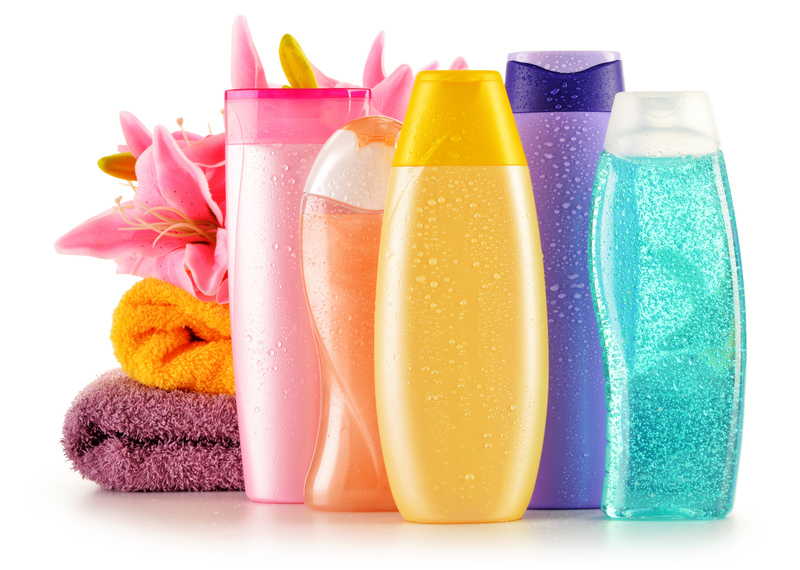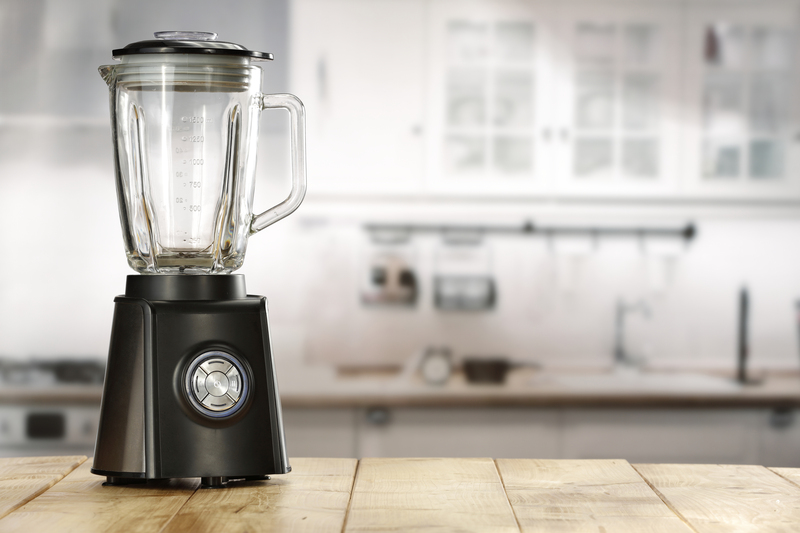Crafted Cleanliness: How to Safely Wash and Revive Velvet Curtains
Posted on 30/05/2025
Crafted Cleanliness: How to Safely Wash and Revive Velvet Curtains
Velvet curtains evoke a sense of luxury and elegance in any home or commercial environment. Their lustrous finish and rich texture make them a favored choice for those desiring timeless sophistication in their decor. However, the allure of velvet is closely tied to its quality and cleanliness. Regular care and the safe washing of velvet curtains are essential for maintaining their beauty and extending their lifespan. In this comprehensive guide, we will explore effective methods to wash and revive velvet curtains without damaging their delicate fibers, ensuring your space remains immaculate and inviting.
Understanding Velvet Curtains: Fabric Composition Matters
Before diving into the cleaning process, it's essential to understand what makes velvet fabric unique. Traditionally, velvet is woven from silk, but modern velvet curtains are often made with cotton, polyester, or a blend of synthetic fibers. The distinguishing feature is its dense pile, which creates unmatched softness and a signature shimmer. Knowing your curtain's material helps you choose the right cleaning technique, which is the first step to safely washing velvet window treatments.
Common Types of Velvet Used in Curtains
- Silk Velvet: Luxurious and delicate, best suited for dry cleaning.
- Cotton Velvet: Soft and plush, generally more durable but still requires careful handling.
- Synthetic Velvet: Polyesters or blends that tend to be more resistant and easier to clean at home.
- Crushed Velvet: Features a patterned, wrinkled appearance, adding texture to any room.

Why Regular Velvet Curtain Maintenance Is Important
Regular dusting and cleaning not only keep your velvet curtains looking attractive but also help prevent the buildup of allergens such as dust, mold, and mildew. Spot cleaning and gentle washing can help revive velvet drapes and keep them plush, extending their lifespan and saving you money on replacements.
Tips for Day-to-Day Velvet Curtain Care
- Shake Out Dust: Weekly, gently shake the curtains outside to remove surface dust and debris.
- Vacuum: Use a vacuum with a soft brush attachment to gently clean along the pile, following the direction of the nap.
- Sun Protection: Shield curtains from direct sunlight to prevent fading and fiber degradation.
- Rotate: Rotate curtains regularly for even exposure to light and air.
The Do's and Don'ts of Washing Velvet Curtains
Washing velvet requires special consideration to preserve the integrity of its fibers and lush appearance. Below, we outline general guidelines for safe washing procedures along with common pitfalls to avoid.
The Do's:
- Read Care Labels: Always follow the manufacturer's instructions. If the label recommends professional dry cleaning, do not attempt home washing.
- Test Cleaning Method: Check the cleaning technique on a hidden part of the curtain first to ensure there is no damage or color bleeding.
- Use Cold Water: If hand or machine washing is allowed, use cold water to prevent shrinking or altering the texture.
- Opt for Gentle Detergents: Choose a mild, non-alkaline soap or a detergent specifically for delicate fabrics.
The Don'ts:
- Don't Wring or Twist: Never wring velvet curtains, as this damages the pile and results in unsightly wrinkles.
- Don't Use Harsh Chemicals: Bleach or strong cleaners can destroy velvet fibers and fade colors.
- Don't Apply Direct Heat: Avoid tumble drying or ironing directly on velvet--heat can crush the pile or cause shrinkage.
Step-by-Step Instructions: How to Safely Wash Velvet Curtains at Home
In many cases, especially with modern synthetics or cotton-based velvets, home washing of velvet curtains is possible. Follow these steps to ensure your cleaning process is gentle and effective.
1. Preparation Before Washing
- Remove Hardware: Carefully take down all hooks, rings, or hardware to avoid tearing or snagging the fabric.
- Shake and Vacuum: Shake out dust and vacuum both sides to reduce surface dirt.
- Spot Clean: Address stains with a mixture of water and mild detergent, using a clean white cloth to dab--not rub--troubled areas.
2. Decide on Washing Method
Check the label. If the care instructions allow, hand washing velvet curtains is typically the safest method, but some sturdier velvets may withstand a gentle cycle in the washing machine.
- Hand Washing:
- Fill a large basin or bath with cold water and a dash of mild detergent.
- Submerge the velvet curtain, swishing gently with your hands for a few minutes.
- Rinse thoroughly until all soap is gone--residue can stiffen the fibers.
- Machine Washing:
- Use only if the label states it is safe.
- Place the curtains in a mesh laundry bag for added protection.
- Wash on the most delicate cycle, using cold water and a gentle detergent.
Proper Drying Techniques for Velvet Curtains
How you dry velvet curtains is as critical as how you wash them. Incorrect drying can permanently damage or distort their distinctive nap.
- Never use a dryer: High heat and tumbling are damaging to velvet.
- Lay Flat to Dry: If possible, place the washed curtain on a large, clean towel on an even surface. Roll up the towel to remove excess moisture, then unroll and lay flat to air dry.
- Hang to Dry: Alternatively, you can hang the curtain on a wide-padded rod or clothesline, making sure the weight is evenly distributed to avoid stretching the fabric.
- Avoid Sunlight: Place the curtain in a well-ventilated, shaded spot.
Addressing Wrinkles and Restoring the Pile
- Steaming: Use a hand-held steamer, holding it a few inches from the fabric, to gently relax wrinkles and lift the pile. Do not press down with the steamer head.
- No Ironing: Never iron velvet directly. If necessary, use the lowest setting on your iron with a piece of cloth between the iron and curtain, and only lightly touch the back side of the fabric.
How to Revive Faded or Flattened Velvet Curtains
Even the most meticulous care can't always prevent aging. Over time, velvet may lose some of its luster or become flattened from heavy use. To revive and restore velvet curtains:
- Steam Regularly: Routine steaming revitalizes the pile and enhances the sheen.
- Brushing: Gently brush the fabric with a soft-bristle garment brush in the direction of the nap to restore fluff and remove dust particles.
- Fabric Spray: Use a commercial velvet fabric refresher spray to brighten and freshen up the look.
- Professional Cleaning: For significant fading or stains that home treatments can't fix, professional dry cleaning is your best option. Professionals use techniques to recolor or recondition velvet, breathing new life into your curtains.
Common Mistakes to Avoid When Washing Velvet Curtains
To ensure the longevity of your velvet drapes, avoid the following pitfalls:
- Excessive Agitation: Over-handling or vigorous scrubbing can break down velvet fibers.
- Overloading Washing Machines: Crowding leads to uneven cleaning and increases the risk of tangling, crushing, or tearing.
- Insufficient Drying: Dampness can result in mildew growth--make sure your curtains are completely dry before rehanging.
- Improper Storage: Fold velvet curtains loosely or hang them to prevent creasing when not in use.
FAQ: Crafted Cleanliness for Velvet Curtain Care
Can all velvet curtains be washed at home?
No. Silk and many high-end velvet curtains are best suited to professional dry cleaning. Always check the care label before attempting home washing.
How often should I clean my velvet curtains?
Vacuum or shake out your curtains every week. A deep clean or full wash can be done every 6-12 months or as needed, depending on exposure to dust and pollutants.
What should I do if my velvet curtains develop mold or mildew?
Mold can cause permanent damage and discoloration. Take the curtains outside, brush off visible spores, and wash according to guidelines. For persistent issues, consult a professional cleaner.
How do I fix water stains or marks on velvet?
Water stains can often be treated by gently dabbing with a clean, damp cloth and allowing to air dry fully. Steam lightly and brush the nap to restore texture.

Conclusion: The Art of Crafted Cleanliness for Velvet Curtains
Washing and reviving velvet curtains is an art that merges proper technique, patience, and the right tools for the job. By understanding your curtain's fabric type, using gentle detergents, avoiding harsh chemicals and direct heat, and taking care in drying and reviving the pile, you can preserve the luxurious allure of velvet for years to come. Routine maintenance and timely deep cleaning not only beautify your space but also protect your investment.
Whether you own plush modern drapes or delicate vintage velvet window treatments, following these expert cleaning strategies will keep your home or venue glowing with crafted cleanliness. Remember, when in doubt, professional services are always the safest choice for your treasured velvet fabrics.
Key Takeaways for Safe Velvet Curtain Cleaning
- Identify the fabric type before washing;
- Follow care labels precisely;
- Use only gentle techniques and products;
- Avoid heat, harsh chemicals, and aggressive handling;
- Revive the pile using steam and soft brushing.
With these tips, your velvet curtains will remain a symbol of elegance and warmth, making any room feel truly special!



